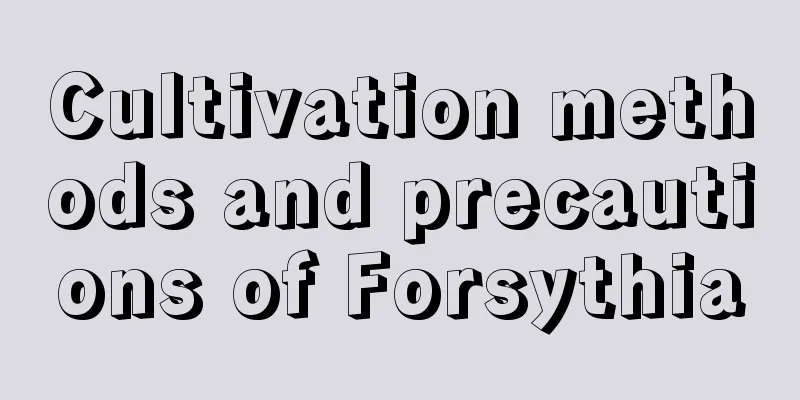What are the cultivation methods and precautions of copper coin tree

Growth habits of copper coin treeThe copper coin tree likes light, is slightly shade-tolerant, prefers warm climates and fertile, moist, well-drained, slightly acidic soils. It is not very cold-resistant, but can adapt to urban environments. It has strong resistance to harmful gases. It grows in mountain forests below 1,600 meters above sea level and is often cultivated in gardens. How to grow copper coin treeLight requirements: The copper coin tree likes sunlight very much, so it must be given sufficient light at normal times. It should be placed outdoors or on a balcony so that it can be exposed to enough light to maintain normal photosynthesis. Temperature requirements: The most suitable temperature for its growth is about 20-30 degrees, try to maintain it within this temperature range. In summer, it is necessary to cool down and spray water on the leaves. The temperature in winter is low, and when the temperature drops below zero, it is necessary to keep warm. Watering method: Keep the plant moist and water thoroughly. Spring and autumn are the growing seasons, when the growth is vigorous and requires sufficient water support. Water can be applied every 2-3 days. In summer, evaporation is vigorous, so water once in the morning and evening every day. In winter, the climate is cold, so water can be applied every 5-7 days. Fertilization method: There are certain requirements for fertilizers. During the growth period, organic fertilizers are mainly applied to ensure good nutrition in order to maintain good growth. Pruning method: Appropriate pruning is required, and the time should be after flowering in autumn. Remove the dense branches, long branches, thin branches, and diseased and insect-infested branches to facilitate light transmission and promote the healthy growth of the plant. Things to note when growing copper coin treesTreatment of atavism phenomenon: There are varieties of copper coin tree with colored stripes, and sometimes atavism phenomenon such as leaf color turning green will occur. The cuttings of copper coin tree need special treatment. ABT No. 2 rooting powder can be used to promote root growth and increase the success rate of cuttings. Pest and disease control: Common diseases of the copper coin tree include brown spot disease, which mostly occurs on the leaves. The spots are gray-brown or yellow-brown, and the edge of the leaves is slightly darker. When a small number of diseased leaves are found, remove the diseased leaves and spray them with 600 times diluted 50% carbendazim wettable powder. Spray once every ten days for 3-4 times in a row. Scale insects are common pests of copper coin trees. You can spray 1000 times diluted 20% cypermethrin wettable powder for protection. |
<<: When is the best time to prune plum blossoms?
>>: What are the cultivation methods and precautions of African violets?
Recommend
Can I water peppers when they are blooming?
Watering pepper flowers You can water the peppers...
How to prune variegated bamboo begonia
Variegated Bamboo Begonia Pruning When pruning ba...
Glass Jade
How to grow glass jade 1. Soil: The culture soil ...
What green plants are best for the living room to bring good fortune and prosperity?
1. Dieffenbachia The trunk of the evergreen is th...
How to deal with the withering of pearl spider plant
what to do 1. In terms of water, although the pea...
How to raise geese
In recent years, the goose breeding industry has ...
Is it okay to put lilies in the bedroom?
Is it okay to put it indoors? benefit The fragran...
Does Pterocarpus scabra prefer shade or sun?
Does Pterocarpus scabra prefer shade or sun? Dalb...
What rootstock is used for grafting Christmas cactus? When and how to graft Christmas cactus
1. Grafted Rootstock When grafting Christmas cact...
Do strawberry seedlings prefer shade or sun?
Do strawberry seedlings prefer shade or sun? Stra...
If you are tired of the vanity of this world, then I will accompany you to retreat to the mountains!
There is a house at the foot of the mountain and ...
How to prune a pomegranate tree?
The pomegranate tree is loved by people for its f...
Cultivation methods and precautions of Tia
1. Maintenance methods 1. Substrate selection: It...
What method should be used to propagate peach seedlings?
In the process of peach tree planting, it is very...
Is glass jade suitable for indoor cultivation?
Is it poisonous? Many curious friends have asked ...









